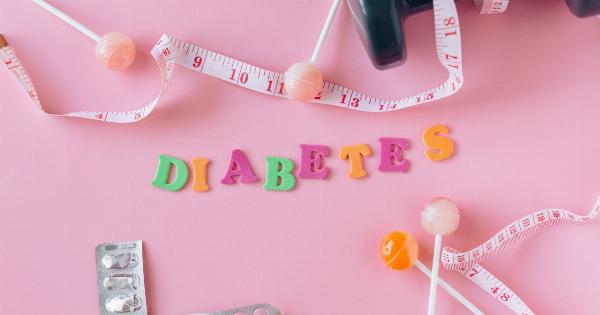Childhood obesity has become a growing epidemic globally, with millions of children struggling with weight-related health issues.
While it is widely believed that unhealthy foods high in calories, sugar, and fat are the main culprits, recent research suggests that even “good” foods might play a significant role in this alarming trend. This article explores the surprising link between wholesome foods and childhood obesity, shedding light on the factors that contribute to this paradoxical phenomenon.
The Myth of “Good” Foods
In an effort to combat childhood obesity, many parents and health experts have championed the idea of “good” foods – those that are low in calories, fat, and sugar while being rich in nutrients.
Fruits, vegetables, whole grains, and lean proteins are often categorized as “good” foods, believed to promote health and prevent weight gain. However, recent studies have cast doubt on this perceived simplicity and shed light on the complexity of the issue.
Unintended Consequences of Healthy Food Messaging
The promotion of “good” foods may inadvertently contribute to childhood obesity. By categorizing certain foods as good or bad, children may develop a distorted relationship with food.
In some cases, they may indulge in “bad” foods more frequently when given the opportunity, as they perceive those foods as forbidden or special treats.
Moreover, “good” foods are often marketed and presented as less enjoyable or less tasty than their unhealthy counterparts.
This leads children to view these foods as less desirable, resulting in a preference for high-calorie, low-nutrient options. The negative associations and perceived lack of palatability associated with “good” foods can inadvertently promote overconsumption of unhealthy alternatives.
The Seductive Appeal of Processed “Healthy” Foods
A significant contributing factor to childhood obesity is the abundance of processed foods marketed as healthy alternatives. These products, often labeled as low-fat, low-sugar, or “nutritionally fortified,” can be misleading.
Despite their health claims, many of these processed “healthy” foods are high in calories, artificial additives, and refined carbohydrates.
Children and parents who fall into the trap of these marketing gimmicks may unknowingly consume excessive amounts of empty calories, leading to weight gain and other health issues.
The seductive appeal of these processed “healthy” foods perpetuates the misconception that weight gain is solely determined by the types of foods consumed, rather than the overall caloric intake.
The Role of Portion Sizes
While nutritious foods are essential for a healthy diet, portion sizes also play a crucial role in maintaining a healthy weight. It is essential to strike a balance between consuming adequate nutrients and maintaining an appropriate caloric intake.
Unfortunately, the emphasis on “good” foods often leads to the misconception that portion control is unnecessary when consuming these foods.
Studies have found that even nutrient-dense foods can contribute to excess calorie consumption when consumed in large quantities.
Overeating “good” foods, such as nuts, avocados, and whole grains, can result in a calorie surplus, leading to weight gain over time.
Promoting a Balanced Approach
Addressing childhood obesity requires a comprehensive and balanced approach.
Instead of solely highlighting “good” or “bad” foods, the focus should be on promoting a varied, nutrient-dense diet while also taking portion sizes into consideration.
Educating children about the importance of mindful eating, including recognizing hunger and fullness cues, can empower them to make healthier choices.
Encouraging family mealtime, involving children in meal planning and preparation, and fostering a positive food environment can all contribute to a healthier relationship with food.
The Role of Physical Activity
Regular physical activity is another crucial aspect of combating childhood obesity. While nutrition is essential, engaging in regular exercise and outdoor play is equally important.
Encouraging children to participate in physical activities they enjoy not only helps burn calories but also promotes overall physical and mental well-being.
Engaging in activities as a family, such as biking, hiking, or playing sports, not only benefits children but also helps create lasting memories and reinforces the importance of an active lifestyle.
The Influence of Socioeconomic Factors
Childhood obesity is often influenced by socioeconomic factors, such as access to nutritious foods and opportunities for physical activity.
In some low-income communities, fresh fruits, vegetables, and other nutrient-rich foods are scarce or unaffordable.
Addressing childhood obesity requires systemic change, including advocating for policies that increase access to affordable and nutritious foods.
Collaborating with local communities, schools, and policymakers can help ensure that all children have the resources and opportunities to lead healthier lives.
The Need for Comprehensive Education
Combatting childhood obesity necessitates comprehensive education for children, parents, and educators.
Teaching children about nutrition, the importance of a balanced diet, and making informed food choices equips them with the knowledge they need to make healthier decisions.
Parents and caregivers play a vital role in modeling healthy behaviors and creating a supportive environment for their children.
By fostering a positive and inclusive approach to food, children can develop a healthy relationship with eating and understand the value of nourishing their bodies.
Conclusion
The surprising link between “good” foods and childhood obesity highlights the need to look beyond simplistic categorizations and consider various factors at play.
Rather than demonizing or idealizing specific foods, it is crucial to foster a balanced and mindful approach to nutrition, emphasizing portion control, physical activity, and education. By addressing these multifaceted aspects, we can better combat childhood obesity and promote lasting health and well-being.






























